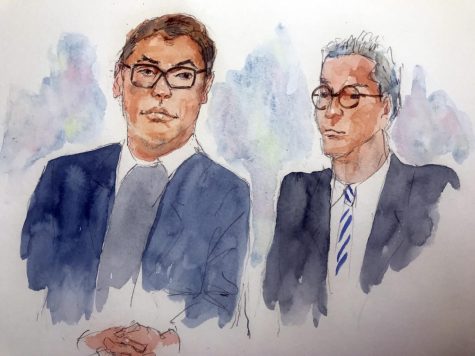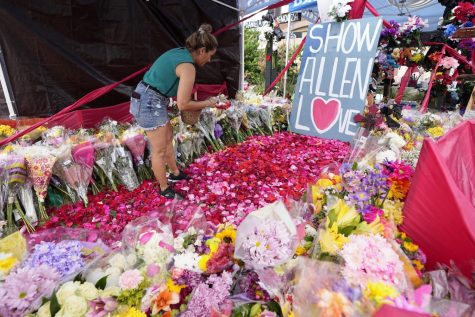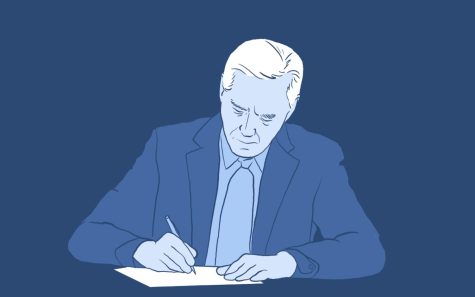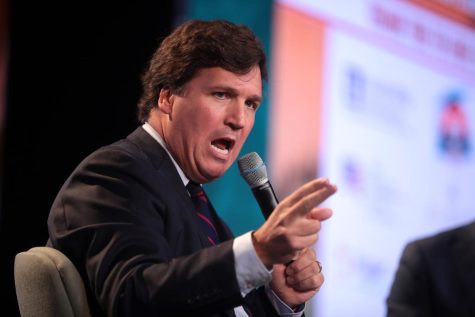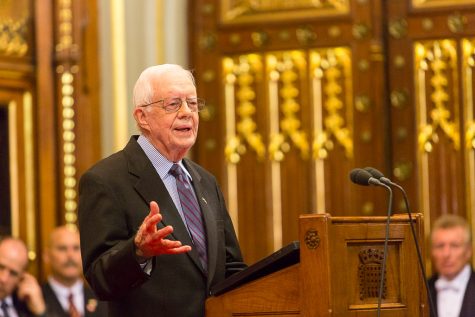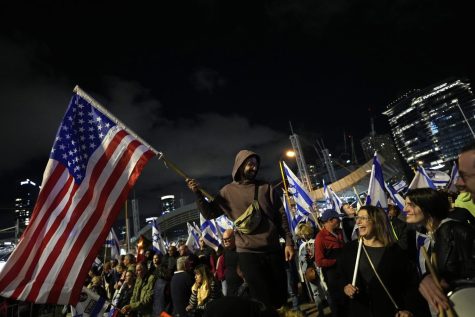The People’s Republic at 70
Participants wave flowers as they march next to a float commemorating the 70th anniversary of the founding of Communist China during a parade in Beijing, Tuesday, Oct. 1, 2019.
China celebrated the 70th anniversary of the founding of the People’s Republic of China (PRC) Tuesday, even as violent clashes broke out in Hong Kong and continued over the weekend.
This year’s annual National Day celebration saw 15,000 troops, hundreds of tanks and numerous aircraft travel through Tiananmen Square, where in 1949, Chairman Mao Zedong founded the modern Chinese communist state after leading an uprising against Chiang Kai-shek and his Nationalist government. The parade was not open to the public, though it was televised.
Ahead of the parade, analysts were keen to anticipate what kinds of military hardware would be on display, including intercontinental, hypersonic and anti-ship ballistic missiles, stealth drones and more. And while new weapons systems did take center stage Tuesday, they were primarily meant as deterrents, according to Tom Lutze, a professor of history at Illinois Wesleyan University, who specializes in Chinese history.
“China wanted to show that it would be a formidable foe if conflict were to break out, that the PRC would be dangerous if provoked to action,” he said in an email.
He added that China’s show of military strength should also be seen in the context of its world-spanning “Belt and Road Initiative,” a multi-trillion dollar global infrastructure development project launched in 2013, which many analysts see as an attempt by China to expand its soft power abroad; and the ongoing trade war between the Trump administration and Beijing.
President Donald Trump, for his part, congratulated Chinese President Xi Jinping on Twitter.
In his National Day speech, President Xi Jinping gave a message of strength through national unity.
“No force can stop the Chinese people and the Chinese nation forging ahead,” he said.
Mentioning Hong Kong by name, he reiterated China’s commitment to the “one country, two systems” policy that has governed the former British colony Hong Kong since it returned to Chinese rule in 1997.
“We will maintain long-term prosperity and stability of Hong Kong and Macau, advance the peaceful development of cross-strait relations, unite the whole country and continue to strive for the complete unification of our country,” he said.
The overall message, Lutze said, was that China has the strength to rival the U.S. — a “great power nationalism” that, along with consumerism and the legacy of the Communist Revolution 70 years ago, legitimates the country’s communist leaders.
U.S. officials have long been concerned about a great power rivalry with China. The 2018 summary of the National Defense Strategy put out by the Department of Defense, for example, warned that China “will continue to pursue a military modernization program that seeks Indo-Pacific regional hegemony in the near-term and displacement of the United States to achieve global preeminence in the future.” China, it said, is an authoritarian power that, along with Russia, is actively “undermining the international order” through strategic competition.
A white paper published by the Chinese government ahead of the 70th anniversary celebrations, meanwhile, said such a “China threat theory” is unfounded, driven mostly by a fear of China’s rapid growth over the last several decades.
“The causes of this theory include cognitive misunderstanding, deep-rooted prejudice, a psychological imbalance brought about by the prospect of falling power and deliberate distortions by vested interests,” the report said.
In Hong Kong Tuesday, protesters clashed with police and an 18-year-old man was shot, with police announcing the arrests of 180 people. Police used water cannon, tear gas, batons and rubber bullets, while hardline protestors threw rocks, petrol bombs and other projectiles.
A mask ban put into effect Friday by Hong Kong Chief Executive Carrie Lam via an Emergency Ordinance — without the approval of the Legislature, who will formally hear Lam’s arguments for the ban when it reconvenes Oct. 16 — spurred even more protestors to take to the streets over the weekend. A 14-year-old was also shot and arrested Friday.
The protests began four months ago over a proposed extradition agreement with China that would allow some defendants to be sent to the mainland for trial. But protestors are more broadly dissatisfied with Lam’s leadership, concerned that Hong Kong is losing its independence to Beijing. Lam agreed to withdraw the controversial extradition bill, but protestors have other demands including an independent inquiry into police brutality separate from the one being conducted by Hong Kong’s Independent Police Complaints Council.
Much has changed in China over the last 70 years, as China has grappled with how to balance the principles of Mao’s socialist revolution with burgeoning capitalist impulses and an evolving relationship with the West.
“From the Chinese perspective, since the 1840 Opium War, the Chinese nation has been bullied by the Western imperialist powers, including Japan, for almost 100 years until the birth of the new regime led by the Communist Party of China,” said Xiaowen Zhang, an associate professor of political science at Augustana College who teaches in the university’s Asian Studies program.
When the Communist revolutionaries took power in 1946, the People’s Republic was a fledgling nation, according to Lutze. Policies of land-reform were enacted, helping displace the long-ruling landlord-gentry class.
“Workers won job security, educational opportunities, housing — and respect,” Lutze said. “The distinctions between managers and workers, between mental and manual labor were diminished.”
But the Great Leap Forward (GLF) of 1958-60, an attempt to jumpstart industrial growth in China, failed miserably. According to some estimates, tens of millions died from famine.
Lutze said in the years following the GLF, the government moved away from socialism toward policies of privatization. The Cultural Revolution of 1966-76 followed, in which Mao acted, often ruthlessly, to cement his authority.
In 1978, the Reform Era began, with Deng Xiaoping ushering in modernization efforts through the privatization of state-owned enterprises. Angered by the corruption they saw happening in the government, many came out to protest in Tiananmen Square, only to face a brutal crackdown and a suppression of any commemoration of the event.
Zhang said China since 1978 has developed a free market-based “state-capitalist” system for its economy.
“It’s true that every Chinese family has benefited from the economic growth, but the benefits are allocated very unevenly,” she said. “In the past 40 years, income inequality in China has also increased at one of the fastest rates in the world.”
Lutze said Xi, who has been president since 2013, represents a continuation of Reform Era leadership.
“The bottom line is that Mao sought to empower the laboring classes in an ongoing struggle against capitalism, and to make China strong to oppose the imperialist superpowers; Deng and his successors, including Xi, by contrast, have embraced capitalism, and they want to make China strong enough to stand, some would argue, as a superpower in its own right,” he said.
As China faces the next decade of rising power rivalries and the growing pains of rapid economic growth, the 80th anniversary of the People’s Republic may find China facing similar challenges.
“Increasing income inequality clearly is a challenge,” said Zhang. “How China can sustain its rapid economic growth as the labor cost increases is another one.”




